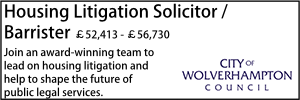The Welsh Housing Quality Standard (WHQS) – 1st April 2024 update
- Details
Alex Clarke sets out the key changes introduced this month to the Welsh Housing Quality Standard.
The purpose of this Welsh Housing Quality Standard (WHQS) is to improve the quality of social housing in Wales. The Welsh Government aims to drive up the standard of existing social housing by setting a standard which all social landlords in Wales are legally obliged to meet.
The Welsh Housing Quality Standard 2023 (“WHQS 2023”) sets a target for the standard of all social housing in Wales, which is referred to as ‘the Standard’. The Standard sets the requirements that all social housing is regularly updated and kept in good condition so social contract holders can live in a home that:
- Is in a good state of repair;
- Is safe and secure;
- Is affordable to heat and has minimal environmental impact;
- Has an up-to-date kitchen and utility area;
- Has an up-to-date bathroom;
- Is comfortable and promotes wellbeing;
- Has a suitable garden; and
- Has an attractive outside space.
All social housing in Wales must meet the Standard. The Standard applies to all self-contained properties wholly owned and managed by local housing authorities under Part 4 of the Housing (Wales) Act 2014 and registered social landlords under Part 1 of the Housing Act 1996 who are regulated by the Welsh Government.
From 1st April 2024 – Nominal occupancy, spaces for living and other requirements
Social landlords will need to be aware of the immediate changes and requirements set to apply to social housing from the 1st April 2024 and onwards.
Nominal occupancy and spaces for living
Nominal occupancy is the maximum number of persons that should be living in a home based upon its size. The nominal occupancy for any particular home is based upon the size of the bedrooms, which must then correlate to the amount of living space required. The following example has been taken from the WHQS 2023:
‘A home with three bedrooms, two doubles (over 10.2m2 floor area and ideally able to accommodate minimum furniture recommendations) and one single (between 6.5m2 and 10.2m2 and ideally able to accommodate minimum furniture recommendations), would be classified as being suitable for five people. It would require a dining room of at least 7m2 and a lounge of at least 14m2. These can be combined as indicated in the table below alongside how much floor space is required for households.’
That said, the nominal occupancy designation of properties held before 31 March 2024 may remain unless it is cost effective and practical to comply with the requirements above.
The minimum floor area applicable for bedrooms are as follows:
- 6.5m2 for a single bedroom
- 10.2m2 for a double/ twin bedroom
The ceiling height should be at least 2.1m and in any habitable room with a sloping ceiling, at least one-half of the floor area should have a ceiling height of at least 2.1m. The narrowest point of any bedroom should be no less than 2.1m in width.
Ideally alongside the minimum floor space and celling heights set out above, all bedrooms should be able to accommodate beds in more than one position and allow for sufficient bed-making space. Please refer to the WHQS 2023 for further detail.
Please note that the above requirements apply only to acquisitions and refurbished acquisitions from 1st April 2024 onwards.
Other requirements
In addition to continuing requirements set out in the previous version of the Standard, from the 1st April 2024, the following requirements have also been added to the Standard:
- Landlords must make arrangements for a smart meter to be installed in each home.
- Measures to improve water efficiency and alleviating water poverty must be installed when replacing fittings and fixed appliances.
- Water butts to be installed.
- Homes must have adequate space for local recycling requirements.
- Homes must have adequate facilities for washing, drying and airing clothes.
- At change of occupation contract, all habitable rooms (bedrooms and living rooms), staircases and landings located within the home should have suitable floor coverings.
- Exposure to noise should be minimised.
- External lockable storage for cycles and equipment must be made available.
- Biodiversity opportunities should be introduced by landlords who own or manage verges, parks, grounds and open green spaces by changing their management of these areas to make them more wildlife friendly.
What is expected from social landlords?
Social landlords are expected to carry out assessments of their housing stock and plan the management of the same as part of their regular business and financial planning. It is imperative that social landlords understand the work required to meet the Standard and taking into account timing of required works and financial planning. A clear plan of how this is to be implemented is required.
All social landlords are also required to develop and maintain a compliance policy. To allow landlords some breathing space to respond to the requirements within the Standard, this must be in place by 31 March 2025.
By 31 March 2034, social landlords should have confirmed that all their housing stock meets the Standard.
Alex Clarke is a Senior Associate at Devonshires.
Must read
Fix it fast: How “Awaab’s Law” is forcing action in social housing
Housing management in practice: six challenges shaping the sector
Why AI must power the next wave of Social Housing delivery
Sponsored articles
Unlocking legal talent
Walker Morris supports Tower Hamlets Council in first known Remediation Contribution Order application issued by local authority
15-01-2026 11:00 am
20-01-2026 5:00 pm


































